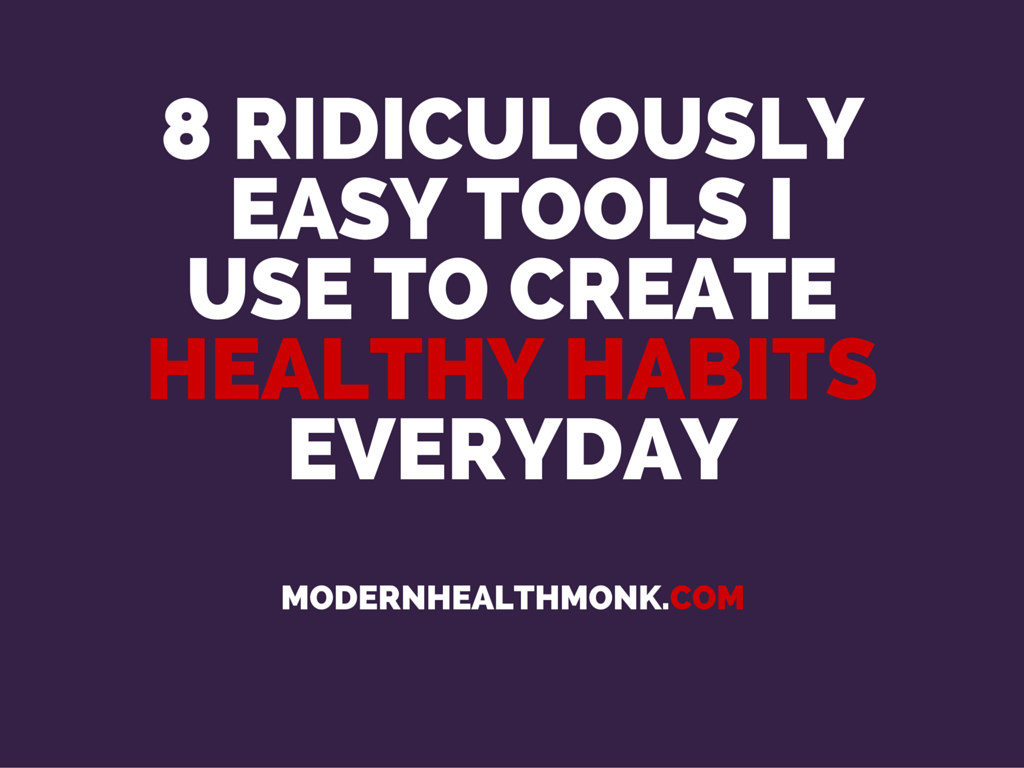
8 Ridiculously Easy Tools I Use Every Day to Effortlessly Create Healthy Habits

Creating the habit of doing something over and over is the secret sauce of success.
Unfortunately, it’s also one of the toughest parts of getting healthy or changing anything in life.
(Duh, that’s why I wrote my book Master The Day – to help address this problem).
But you have to admit it gets rough – at the end of a long, tiring day, how do you get yourself to actually do the stuff you know will improve your health or your life?
And how do you get yourself to do those things on the weekend, or consistently?
Well, there are eight tools I use every day to help make this a reality.
#1 The Strides App

One of the biggest ideas in my book Master The Day is the idea of daily habit tracking.
It’s such a simple idea, but I’ve found it to be one of the most profound changes I’ve made in my daily life.
It’s pretty clear: Whatever isn’t working in your life, track the daily habits related to that aspect of your life.
This works just as well if you notice your waistline expanding as it does if you notice yourself overspending.
Spend too much money? Track how much you spend and what you spend it on.
Eat too much bad food? Track what you eat, and how much.
In too much of a negative mood every day? Track what you’re doing, what you think, and what you say.
This is a ridiculously simple way to find out what’s not working – and instantly make yourself more conscious of what’s occurring.
I primarily use the Strides app these days for a few key habits:
- What I eat, when, and how much
- A nightly reflection ritual (to get off the computer earlier, for the sake of my sleep)
- My daily meditation routine
None of these are hard habits, but doing them consistently can be extremely challenging.
For example, below you can see just how crappy of a job I’m doing meditating 20-40 minutes per day:
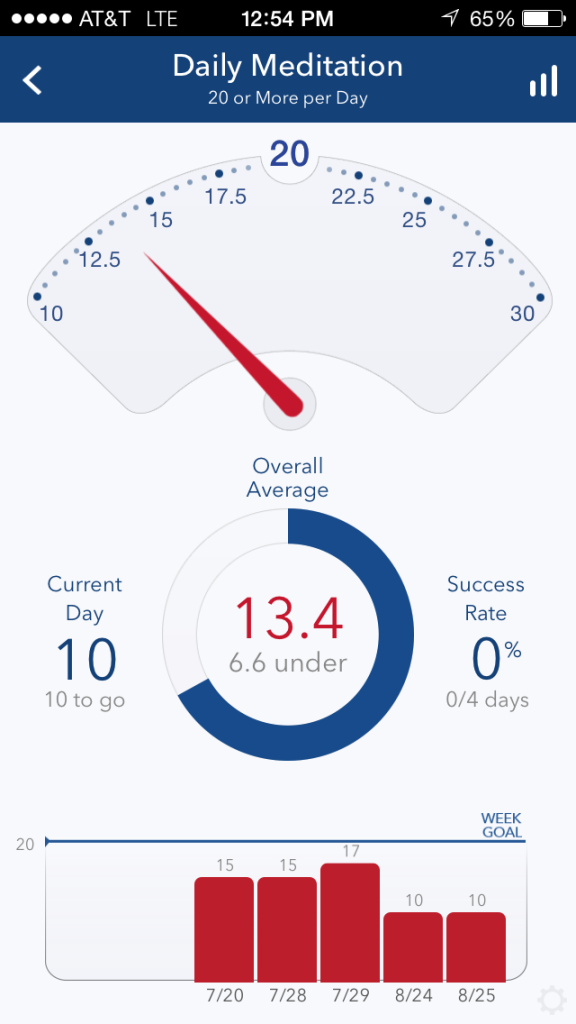
Primarily, I recommend using the strides app like this:
1. Pick 3-5 key habits (definitely not any more), for at least 100 days.
A big mistake I’ve made before is changing too many habits at once. I remember at one time I was changing about 15 different habits – health ones, financial ones, happiness ones, etc.
The problem is not that you can’t change multiple habits at once – you can – the problem is that you have to track these daily, and then review weekly what isn’t working.
That’s a lot of work to do, and I’ve found that the more habits I try to reflect on, the more likely I’ll feel resistance because it mentally feels like a lot of work.
Hence why I track just 3-5 habits daily.
2. Track them daily.
The next thing that’s awesome with the Strides app is that it’ll send you notifications when you want it to.
For my meditation, which I only do in the morning, I want notifications early in the morning around 7:30 am.
For my food-related ones, I send 3-4 per day before each major meal.
And for my sleep wind down ritual, I send it two hours before bed.
3. Do the weekly review I talk about in this article.
In my article on the Master the Day system for effortlessly creating new habits, I talk about the weekly review.
All the weekly review does is ask this:
“Did it work? Yes? Good. No? Why not? What new habits do I need next week to actually do <XYZ habit>?”
From there, I utilize this kind of system for figuring out what new habits I need.
2. The Wall Whiteboard & Genius Self Journal

An Excerpt From My “Genius Self” Journal
This is an exercise that I got from Jim Rohn.
He talked about the idea that we should keep a journal for whatever large problems we have in our life, for whatever goal we are trying to achieve.
Inside the journal, write down whatever you want – but for me, I don’t keep a teenage girl-type journal (no offense to anyone who does 🙂 ).
I write down specific problems, and then use it to brainstorm potential solutions.
Personally, I use this a lot for my financial life, since I’ve struggled with that quite a lot, but here’s how you might use it for health.
I tend to organize each page with one idea.
E.g. Problem: I can’t get myself to go to the gym.
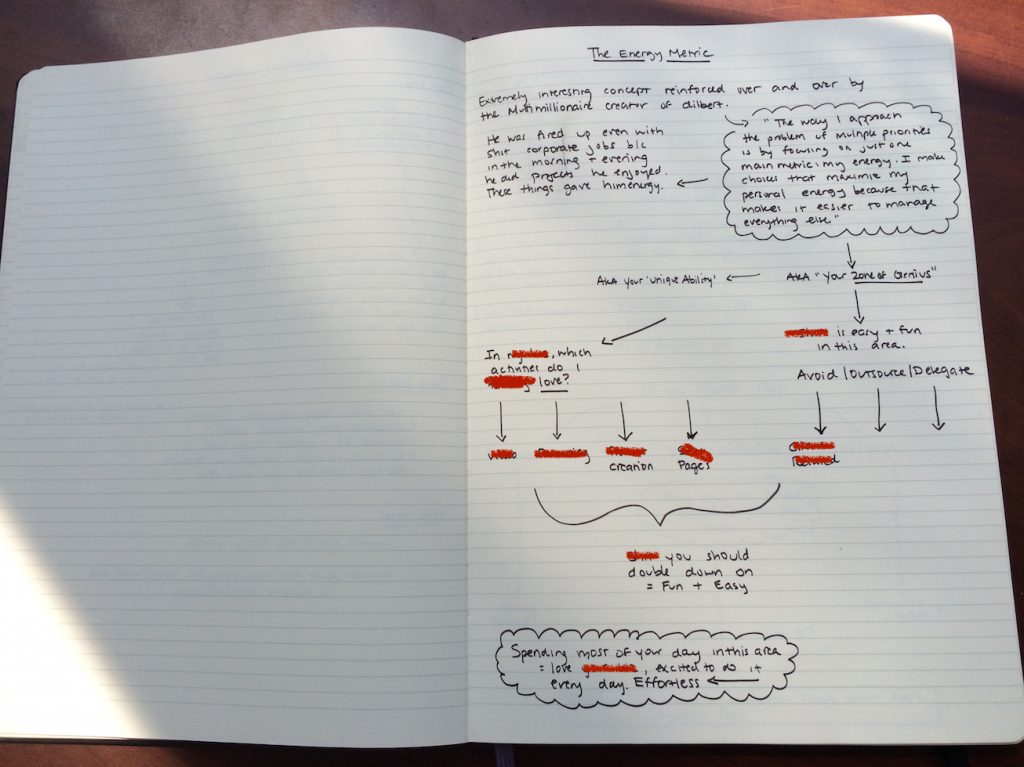
The energy metric is an idea from the fantastic book written by the creator of Dilbert – if you only have a little time each day to do what you love, do what gives you energy because you’ll be more likely to do it even when you’re tired.
Then I describe the problem in a paragraph.
And then, I like to visually organize solutions with charts, pictures, arrows, and diagrams.
So if you find yourself struggling to go to the gym, use this as your problem solution journal.
I could go early in the morning.
I could go right after work.
I could pay for a class like karate.
I could do home workout tapes.
And then I spend the next few weeks testing these things out to see what works for me. The best one is the one that actually works for me. That’s a general rule I have.
Typically, I collect a few types of advice here for solving my problems and creating new habits.
- Insights from books, movies, and audiotapes. I read about a book a week and listen to audiobooks every single day, so I get ideas constantly that I then write down here.
- Inspirational biographies. I love reading about how other interesting/creative/successful people lived, and I try to emulate them. When I hear a concept I like, I write it here.
- Conversations with others and brainstorming sessions. Most of all, I think that we often know the answers to our own problems, but we rarely sit down to think and strategize. It’s a lot easier to say “screw it” than it is to think about a solution.
3. The Pick Four Nightly Goal Achieving Awesomeness System
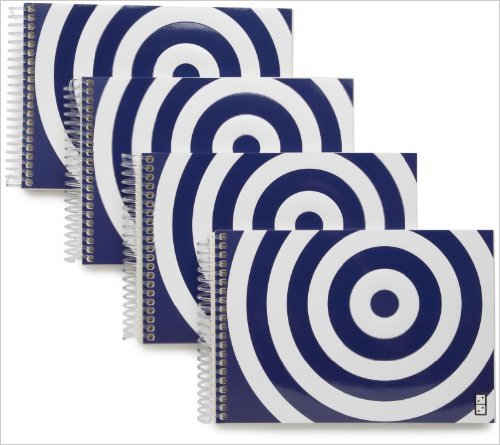
After reading some Zig Ziglar and this article by Seth Godin, I decided to buy these.
They ended up being so effective, and so inspirational, that I ended up buying them for all of my clients, and to this day, anyone that works with me 1 on 1 gets a series of gifts in the mail, and the second month is always a few of these.
Here’s how it works.
Each night, you log a few things:
- What are your top four goals?
- What did you do today to make progress towards those goals?
- And the final bomb of a question: Was it enough?
I’ve found that this really works well with my Master The Day system – it really anchors the concept of focusing on just making today perfect, tracking daily habits, doing daily reviews, etc.
This is how I wind down every single night, because it also gives me a reason to get off the computer and sleep better.

I also use this to log whatever personal changes I need to work on for myself.
Since reading about Benjamin Franklin’s nightly review, I started implementing something very similar.
I do a quick reflection of the day, and write down any areas in which I was very obviously flawed.
Was it impatience? Was it raising my voice? Was it something else?
I write these things down inside this pick four book too just to lower the friction and make sure I actually do it.
This is a fantastic way to ingrain that daily consciousness about what needs improving, in a world where we often make the same mistake and have the same flaw for 20 years. In my book, that’s unacceptable and I don’t want to be someone who repeats his mistakes for decades, so I try to put a lot of personal emphasis on this.
4. Evernote To Figure Out How to Get 10 Hours of Results in 1 Hour
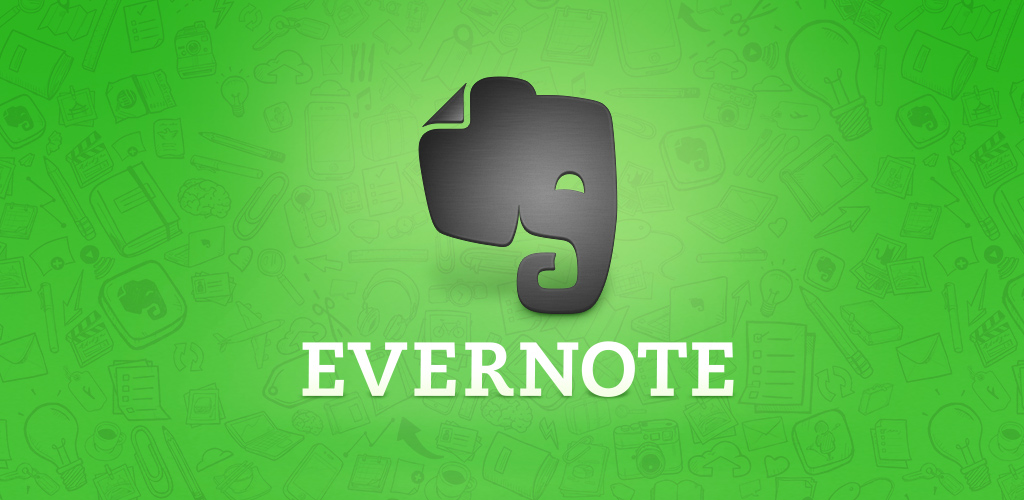
One of the main reasons I LOVE Evernote is because I’m a massive organization nerd.
That means I love organizing and collecting information, tracking a bit of data, and then logging it somewhere.
The problem for me is that I hate using my phone for extended periods of time, but constantly use my computer. The other problem is that when I’m on the go is often when I get ideas, or want to write down books to buy, or want to keep a food log, etc.
So evernote is the perfect fix, since it automatically syncs with my computer.
That way, when I get home from walking around, I know exactly what I logged on my iPhone and I don’t need to update anything.
But in particular, there’s a ritual I learned from Darren Hardy in his book The Entrepreneur Rollercoaster that has tons of health applications too: cash out at the end of the night, and keep track of your vital few.
In a local deli, this is dollars, but in your health routine, this is whatever core habits push you forward every day, which I track like this:
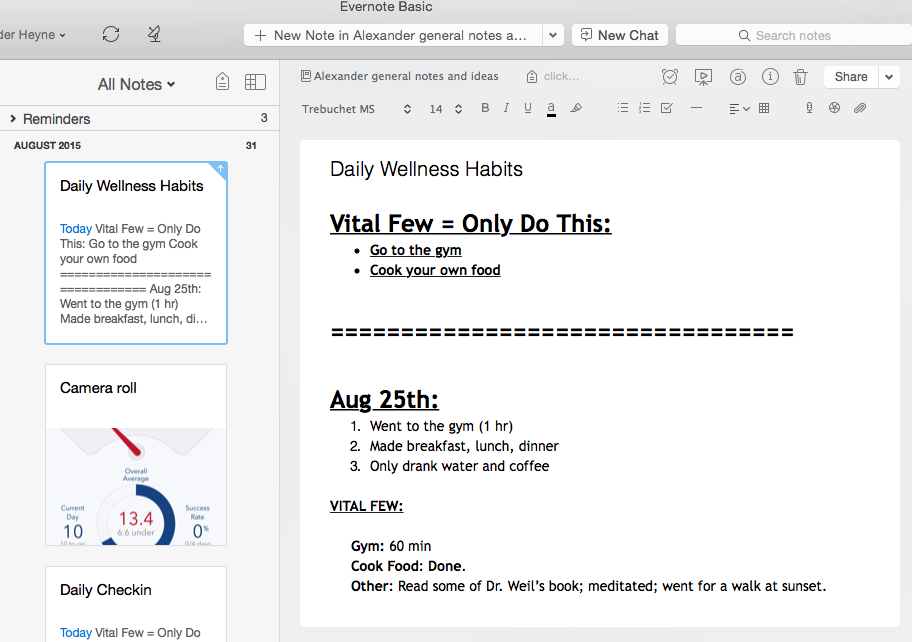
My primary vital few (the big influencers on my health, weight, and how I feel) are the following:
- What I ate (not how much)
- If I exercised
- Sleep
- How happy I am
So – following my golden rule above – I just track the daily habits surrounding those things.
In the evening, I quickly checkout and write yes/no next to each thing.
Gym? Yes.
What I ate/did I cook my own food? Yes, chicken, rice, asparagus.
And then I rate my sleep quality (how I feel, not how many hours I slept), and how happy I am.
All of these things play a massive role in how healthy I look and feel.
The Other Reasons You Should Get Evernote
I also read a lot of books, and evernote is the fastest way for me to log them when I’m having a conversation with someone. Then once it shows up on my computer when I go to work, I can buy it on amazon.
Sometimes I’ll include health ideas, like personal challenges, new habits I want to experiment, progress reports, or even specific docs on health problems of mine that are recurring, like digestive issues, back pain, etc.
Recently, I’ve even been keeping ideas for my next book (spoiler alert!).

Makes sense?
Get it and start using it.
5. The One Page Vision Of The Perfect Year Ahead
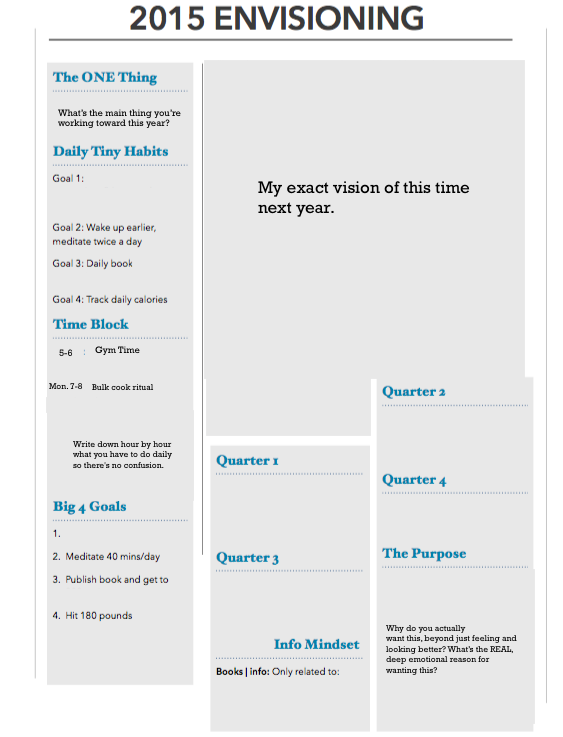
One of the most profound tiny habits (and ways I stay focused on my habits) is what I call the yearly vision document.
Going back to my organizational nerd roots, it’s really a one page document that has all my goals, habits, visions, and my purpose in one spot. This is the exact thing I look at twice a day to remind myself of what I’m going after.
It has a few major sections, which I realize seems like a lot, but I challenge you to create one and tell me how it has changed your life.
The major sections are:
- The main thing you’re working towards
- The big 4 goals you have (ideally in different aspects of life)
- The daily tiny habits related to each goal (1 habit for 1 goal)
- When you’re setting the time aside for the habit
- Your perfect vision of next year
- Quarter 1 projects
- Quarter 2 projects
- Quarter 3 projects
- Quarter 4 projects
- The purpose of it all
Let’s jump into these now.
1. The One Thing
There’s a great book by the title of The One Thing, but really I tend to focus on one big idea each year.
Sometimes it’s the year of health, and sometimes it’s the year of finances.
If you’re reading this, your one thing is probably going to be health related. The thing is that you need to make this goal as tangible as possible – lose XYZ pounds. Improve XYZ markers of a disease or condition. Be migraine free 5/30 days of the month, etc.
Write it down, because when it’s on paper you won’t forget it.
2. Your Big 4
From here, I pick whatever my big four goals are. Again these could be as simple as losing 15 pounds, sleeping at least 7 hours a night, walking 10 minutes a day, 5 days a week, and eating “healthier.”
Here’s the thing: I recommend setting process goals, because they help you focus more on the day to day. But for a start, these will do.
3. One Habit For Each Goal
Here’s the secret sauce.
Most people only write down what their goals are, and sometimes even write down the process to get there, but they almost NEVER write down what habits they have to do today that will inevitably get them there.
So I make sure to write down the key, most important habit to reach each goal.
For losing 15 pounds, it could be removing soda. Habit #1 = Work on eliminating soda, or only drink 3/7 days a week to start.
For walking 10 minutes a day, it’s walk 10 minutes a day.
For eating healthier, that could be cooking your own food 5/7 days a week.
For sleeping 7 hours a night, the habit could be setting an alarm at 10 pm the night before to sleep earlier.
4. The Time Block
Another concept from The One Thing is to write down the physical time on your calendar to do the habit.
So here is where I write down gym 5-6, or Monday: cook 8-9.
Habits on paper = success.
5. Your Perfect Vision
One of the most important parts of my yearly vision document is the fact that I write down, well, my yearly vision.
That is, I write down the vision of how I want it to look.
Normally, there are a few main issues I’m working through (that many of us tend to work through), like health, finances, or even just being happier. So I almost always address those key things on this yearly vision. The thing I do here is that I paint the picture in the present, so here’s an example.
Big 3 things I want to work on:
A. Feeling less crappy (more energy)
B. Having a better social life
C. A work project or passion project that excites me after work
So here’s how I paint the picture.
“I see myself getting home from work, and for the first time in a long time I’m super excited that I get to go to <PASSION PROJECT | Kung fu | Basketweaving | Learning French>. I can feel the energy coming into my body as I’m having a blast. When the weekends roll around, I’m no longer sitting around and working because I don’t know what else I want to do – I have a thriving social life filled with awesome people that always have fun things going on. And then when the week begins again, I can feel myself leaping out of bed feeling awesome, because I slept earlier and I’ve been eating more plants and drinking more water. Life is awesome.”
It sounds ridiculously corny, but it works.
6. Quarterly Projects
Personally, I like to set fun projects each quarter.
For example, a few quarters ago, it was writing my book.
In the coming quarter, I’m planning trips, learning new things, and taking up a new hobby.
For you that could be something like taking a fun, new evening class (wine tasting?).
It could be taking a daily walk. It could be writing your book. It could be a ton of things. Either way, quarterly projects give me a focus for 100 days.
7. The Purpose of It All
Listen, I won’t beat around the bush, change is hard. Really hard.
Especially when you wake up every day and you’re sick and tired of repeating the same day over, and over, and over again. It can really suck the energy out of you, which is energy required for changing your life.
When my alarm is blaring in the morning and I don’t want to do anything but sleep (or die), I look at my purpose on the sheet.
There is no clean cut formula I can give you for “finding purpose” – but for me, spending the time to sit down, write it out, and actually do it, made a massive difference to me in the mornings where I’m extremely discouraged.
6. The Morning Ideasex Journal & Routine
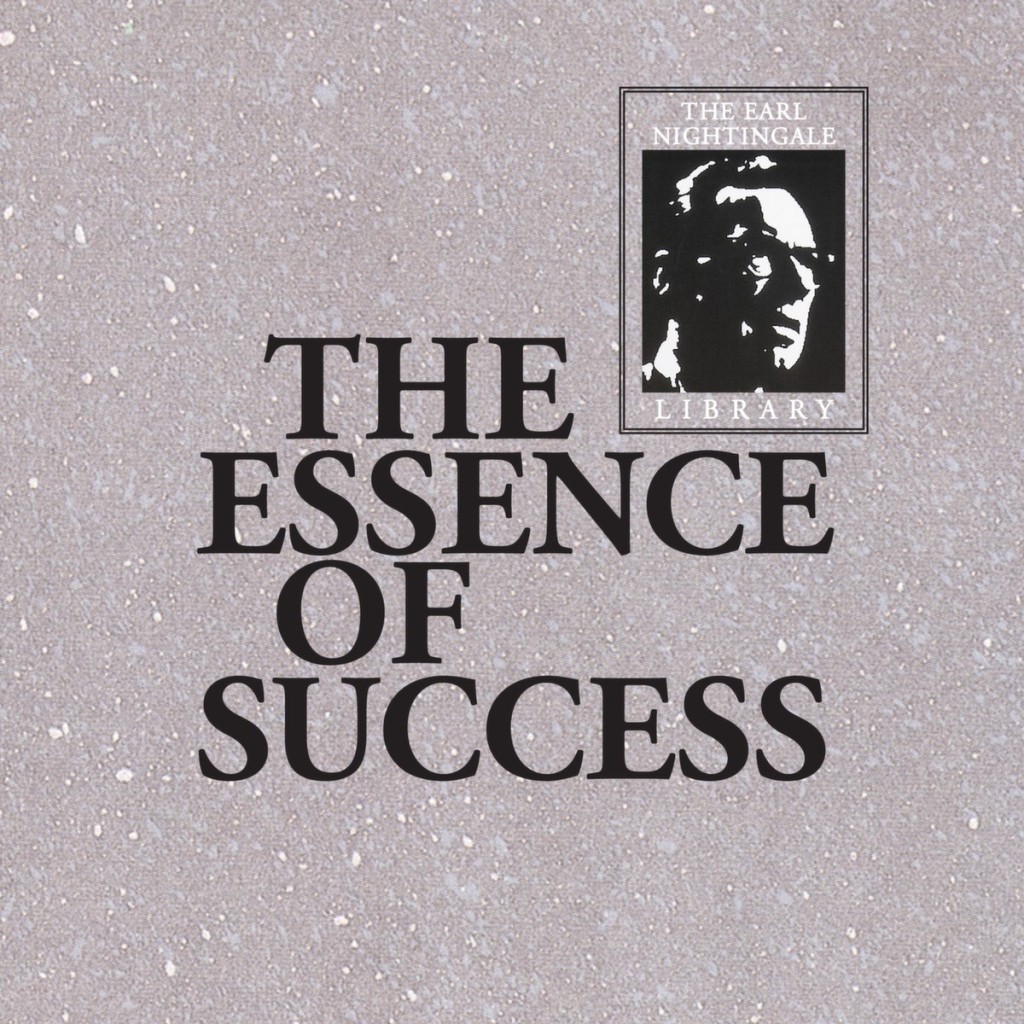
I was recently listening to an Earl Nightingale tape when I was traveling in Colombia, and something in particular caught my ear.
Earl talked about getting into the routine of just writing down tons of ideas daily, for whatever problem you are trying to solve.
And it sparked something because I heard the same idea from James Altucher’s book Choose Yourself.
In it, James talks about the idea of becoming, well, an idea machine.
I have to be totally honest here – I really suck at being creative.
I’m just NOT a creative person, and thus, almost never have creative ideas. Well, that was the story (The narrative) I told myself.
Instead, since I talk a lot about tiny habits here, I anchored in a quick 15 minute routine to my morning ritual: I would whip up some tea and just write down 10 ideas a day. It didn’t matter what the ideas were about, other than the fact that they were ideas.

Sometimes I woke up in a bad mood and they were ideas regarding what would need changing externally for me to be happy.
Sometimes it was how to be more effective at doing a certain habit (like consistently meditating).
Sometimes it was just about 10 things I want to do before I die.
But I have found it to be true that the more I spend time writing down ideas, the better I get at creating ideas out of thin air. This has always been a very, very difficult thing for me (innovation) since it’s not how I’m wired.
Using this daily habit though has really helped me re-write that story that I’m not creative, and has given me some amazing ideas for how to be healthier, happy, and more productive.
I use this as a creative problem solving tool especially if I’m having a tough time with a personal goal.
7. Reverse Morning Pages
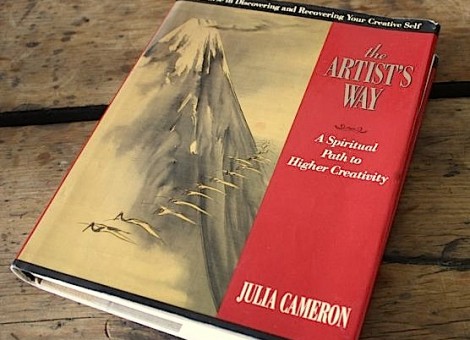
I got this awesome habit from my friend Erin Stutland.
When I interviewed Erin for my show, she talked about this technique she learned from an A-list very, very famous celebrity – something she used when she came to New York City the first time around.
When she originally landed in NYC, she was already a phenomenal dancer, but coming to NYC put her in a much, much bigger pond where she was dealing with pros on a daily basis.
During this period, she started feeling a ton of self doubt – and one of the exercises she started doing in the morning was the morning pages exercise from Julia Cameron’s The Artist’s Way.
But she had an interesting twist: after writing down what was really “ugh” in her head, she’d write affirmations for those things.
So if she felt herself outmatched when dancing (and I think doing ballet), she wrote affirmations like I’m a world class dancer.
Now, after our chat I started doing something similar and LOVED it.
A substantial part of why I do this is because I’m a big believer that affirmations and visualizations are a fantastic path to creating habits – what I think about, I find myself becoming more of.
If I spend more time reading health books, I notice myself making healthier decisions every day.
If I spend myself reading books about sages and wisemen, I notice myself being more cultivated, calm, and present throughout the day.
So for me it has really been a linear relationship – read more about XYZ, become more of XYZ, because I spend time thinking about it.
A large part of “the gap” between where you want to be and where you are is the inner game.
So I use it to shift this inner game in my favor.

Here’s how to re-write those negative scripts in your brain specifically.
Self doubt – “My mom said I’d never be thin” ==> “I realize that how I look and feel is 100% up to me, and that I am 100% in control – I can change whenever I want, into whoever I want.”
Time – “I don’t have the time to exercise” ==> “I have time to exercise, and I easily find some key places during my busy schedule where I can fit it in.”
Self Esteem – “I don’t deserve this, and need to spend my time watching after my <family/friends/kids/spouse etc>” ==> “This is not only something incredibly important to me, but it’s something I deserve, and I want to do for myself.”
You get the picture. Literally write out the opposite of whatever the negative narrative is inside your head.
8. The Forecasting Technique
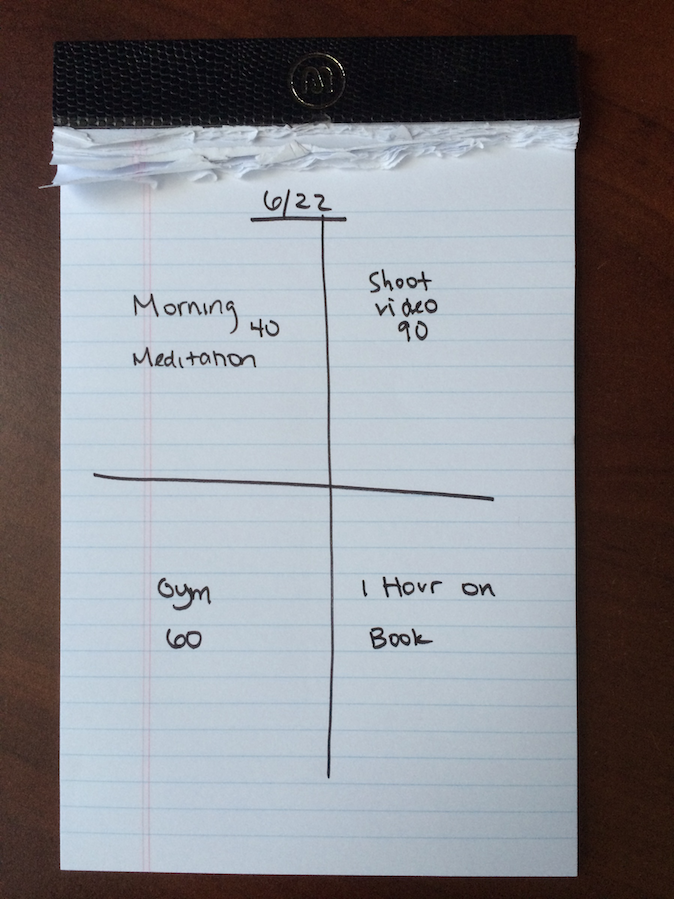
I don’t know who I learned this one from, but it’s simple: the night before, write down what you have to do tomorrow (specifically, what habits).
It’s so simple, but it works so well.
It’s almost like you psychologically prime yourself for the day ahead and it sets up mental triggers in your brain regarding habits.
Each night, I write down work and life related tasks for five minutes before bed.
I talked about this in my article on the Benjamin Franklin nightly review, something I do as a personal development exercise as well as something to get off the computer and wind down before bed.
But this works phenomenally well for creating habits too.
Take a look at these two scenarios, and you tell me which one will make your life more awesome.
Scenario 1: Normal day.
You go to bed early, wake up early, and then get up to have breakfast before work.
What were you supposed to do again today?
Oh yeah, I had to meditate this morning.
Then you go to work, you get off and think, “Yay! Time to go home.”
Then you get home and realize, “oh, I was supposed to go to the gym.” Oh well. Then you go out to dinner with a friend, forgetting your third habit: “Whoops, I was supposed to cook tonight.”
The whole day doesn’t go according to plan, even though you knew what habits you had to work on.
Scenario 2: Tomorrow with the forecasting technique.
You go to bed early, wake up early, then first thing you do is look at your sheet, which says:
- Meditate 10 minutes
- Gym right after work 30 minutes
- Make dinner tonight
So you meditate.
And then when you go to work, in the back of your mind you know you’re going to the gym.
And after the gym, you’ve already mentally forecasted the day – make dinner.
No surprises today – because you already mentally rehearsed it.
See the difference?
Your Tiny Habits For Today
So – the secret sauce of success is habits.
But how you get yourself to actually show up daily to do the habits is the real key.
So how do you get yourself to do it? The eight things we talked about here.
What else would you add to the list? Share it with me below.
-Alex



Thanks Alex. This is thoughtful and generous. I appreciate it.
PS the Zig book is now out of stock, alas…
Hey Seth,
Thanks so much for taking the time to respond.
I really, really found it extremely helpful, and I think I read your story at a particular low in my journey – so it really hit me where it needed to. Thanks for sharing your story and introducing me to this great tool!
-Alex